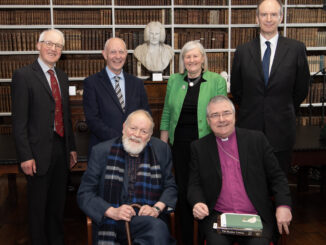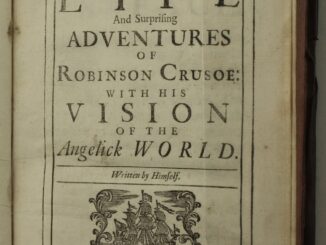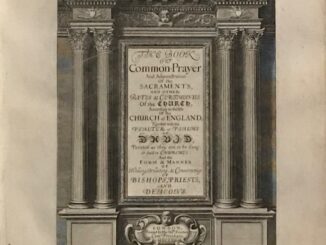Mark McKillion, Ulster University MA History graduate and volunteer for the Library in 2022, carried out research on Miguel de Cervantes Saavedra’s The History and Adventures of the Renowned Don Quixote … (1755) (object ID P001471984).
You can adopt this book for £500, and support the work of the Library, caring for our wonderful collections, and inspiring present and future generations!
As one of the most celebrated and most translated fictional texts in history, Don Quixote was described by scholar Tom Lathrop as almost experimental in its writing style, as Cervantes sought to imitate the ancient romances that often revolved around a generalised ‘knight in shining armour’ story and poke fun of the concept through parody. In fact, Cervantes’ intent is made clear as early as in the Prologue to Part I of the text, in which he recalls how his unnamed friend advises him that he should gain an understanding of the romantic genre in order to recreate it in a new context, stating that “the more perfect the imitation is, the better your writing will be.”[1]
When worldwide interest in Don Quixote increased during the 18th century, Tobias Smollett would set about translating the text to English: taking inspiration from a variety of sources, including John Stevens Spanish-English dictionary published in 1706, Smollett would commit to his work with a great deal of versatility, with Alexander Tytler stating that his strong sense of humour and satire allowed for him to efficiently adapt to various styles of writing by alternating between “the solemn, the lively, the sarcastic, the burlesque, and the vulgar.”[2]
Likewise, Smollett himself speaks highly of his own abilities within the text, most notably when he comments on Stanza XI of the goatherd’s song by declaring that he had “endeavoured to adapt the versification to the plainness and rusticity of the sentiment,” a notion he felt was not shared by his fellow translators.[3]
However, Anthony Pym notes how Smollett’s idiosyncratic approach to translating Quixote could potentially be a source of criticism for being unable to recreate Cervantes’ writing style exactly as it would be interpreted by the text’s original Spanish audience. Pym then goes on to compare Smollett’s work to a more contemporary translation of Quixote by Edith Grossman, a 20th century writer, which he describes as a somewhat more formal rendition of the text.
Grossman makes use of verse form to more thoroughly convey Cervantes’ narrative to the reader, thereby establishing her writing style as something of a foil to Smollett’s,[4] who instead preferred to place emphasis on Don Quixote’s characterisation “without raising him to the insipid rank of a dry philosopher, or [the] unentertaining caprice of an ordinary madman.”[5]




